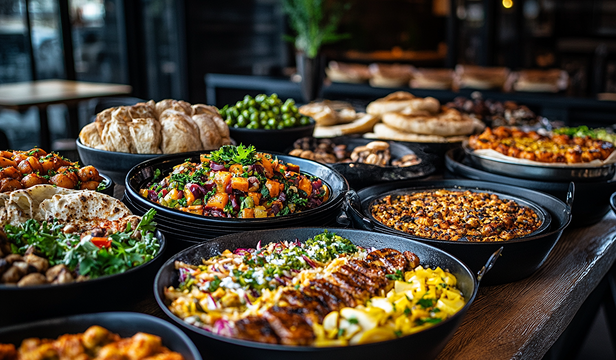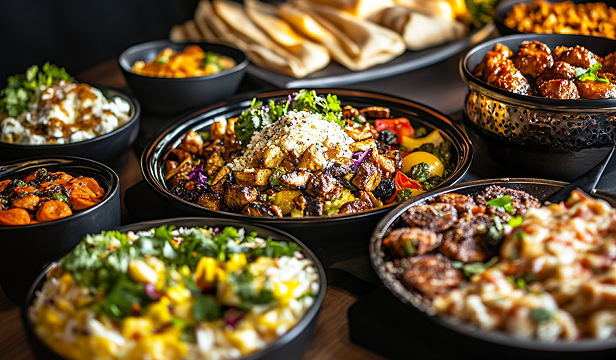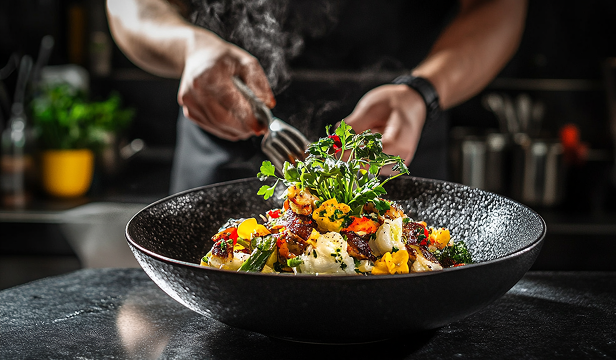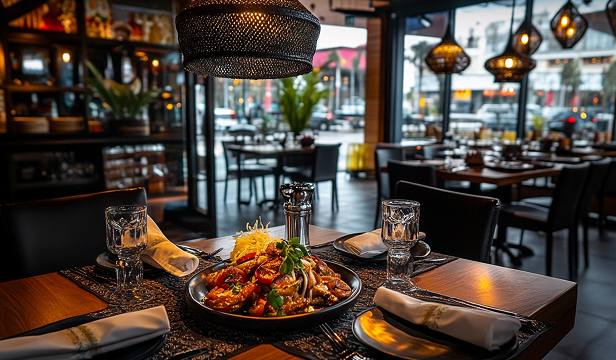Introduction Middle Eastern art is renowned for its intricate patterns, rich colours, and deep cultural…

How Ancient Middle Eastern Art Influences Modern Food Design
Introduction
The Middle East has long been a cradle of artistic innovation, with its ancient civilizations leaving behind a legacy of intricate patterns, calligraphy, and geometric designs. These artistic elements have not only influenced architecture and textiles but have also made a profound impact on modern food design. From plating techniques to tableware aesthetics, the influence of ancient Middle Eastern art continues to shape contemporary culinary presentation.
Geometric Patterns and Food Presentation
One of the most distinctive aspects of Middle Eastern art is its use of intricate geometric patterns. These symmetrical and repetitive designs, commonly found in Islamic architecture and ancient manuscripts, have been adapted into food design in various ways:
- Plating Arrangements: Chefs use geometric precision to arrange food symmetrically, mimicking the tessellated designs seen in ancient mosques and palaces.
- Pastry and Bread Art: Traditional flatbreads and pastries are often decorated with embossed geometric shapes, reflecting ancient artistic motifs.
- Garnishing Techniques: Ingredients such as pomegranate seeds, herbs, and edible flowers are carefully placed to create visually harmonious compositions.
Calligraphy and Edible Design
Arabic calligraphy, one of the most revered art forms in the Middle East, has found its way into modern culinary aesthetics:
- Edible Arabic Script: Desserts and cakes are often adorned with chocolate or gold leaf calligraphy, displaying meaningful words or poetic verses.
- Latte and Beverage Art: Arabic typography is used to craft intricate designs on coffee and other beverages, elevating the dining experience.
- Signature Branding: Many high-end restaurants and patisseries incorporate calligraphic elements into their logos and food packaging, celebrating their cultural roots.
Use of Traditional Motifs in Tableware
The visual identity of Middle Eastern food extends beyond the plate itself to the tableware and dining environment:
- Hand-Painted Ceramics: Plates, bowls, and serving dishes feature traditional motifs such as arabesques, floral patterns, and kufic inscriptions.
- Metal Engravings: Gold and silver-plated serving trays reflect the opulence of historical Middle Eastern banquets.
- Tile-Inspired Presentation Boards: Wooden and ceramic boards with intricate designs serve as contemporary reinterpretations of ancient artistic traditions.
Influence on Modern Dessert Design
Middle Eastern desserts have embraced ancient artistry in their presentation:
- Baklava and Kunafa: These sweets are often arranged in radial symmetry, echoing the geometric designs found in Islamic art.
- Saffron and Rosewater Infusions: The use of vibrant colours and fragrant spices creates an immersive sensory experience akin to traditional artistic expression.
- Decorative Sugar Work: Intricate sugar lace and filigree techniques mirror the detailed craftsmanship of ancient metalwork and mosaics.
Fusion of Art and Gastronomy in Contemporary Dining
Many modern chefs and food designers are integrating Middle Eastern artistic influences into fine dining experiences:
- Michelin-Starred Menus: High-end restaurants craft dishes inspired by Persian miniatures and Ottoman tilework.
- Edible Installations: Interactive dining experiences feature food as a form of visual storytelling, incorporating artistic narratives.
- Culinary Events and Exhibitions: Food and art festivals showcase the fusion of ancient Middle Eastern designs with contemporary plating techniques.
Conclusion
Ancient Middle Eastern art continues to be a vital influence in the world of modern food design. By integrating geometric patterns, calligraphy, and traditional motifs into plating, tableware, and presentation techniques, chefs pay homage to a rich artistic heritage while pushing the boundaries of culinary creativity. This fusion of past and present ensures that the region’s artistic legacy remains alive, not only in museums and architecture but also on the dining table.



